
The 2018 Krakatau eruption and tsunamis, Indonesia
updated on 15 January 2019

|
| Fig.1. Location of Krakatau and Sunda Straits (modified from Fig. 1 of Maeno and Imamura, 2011) |
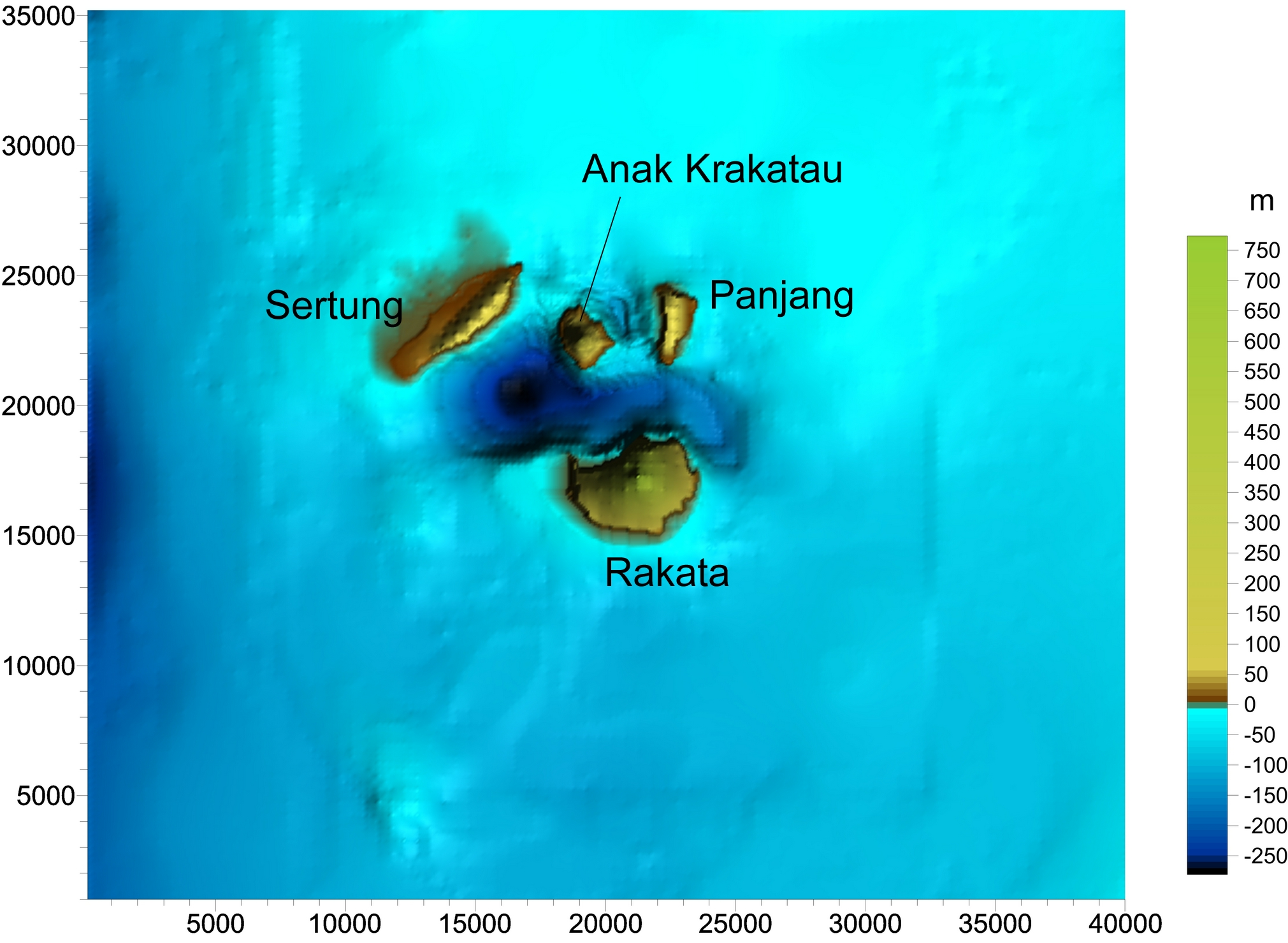
|
| Fig.2. Topography and bathymetry of Krakatau volcano before collapse of Anak Krakatau. The central island is Anak Krakatau. |
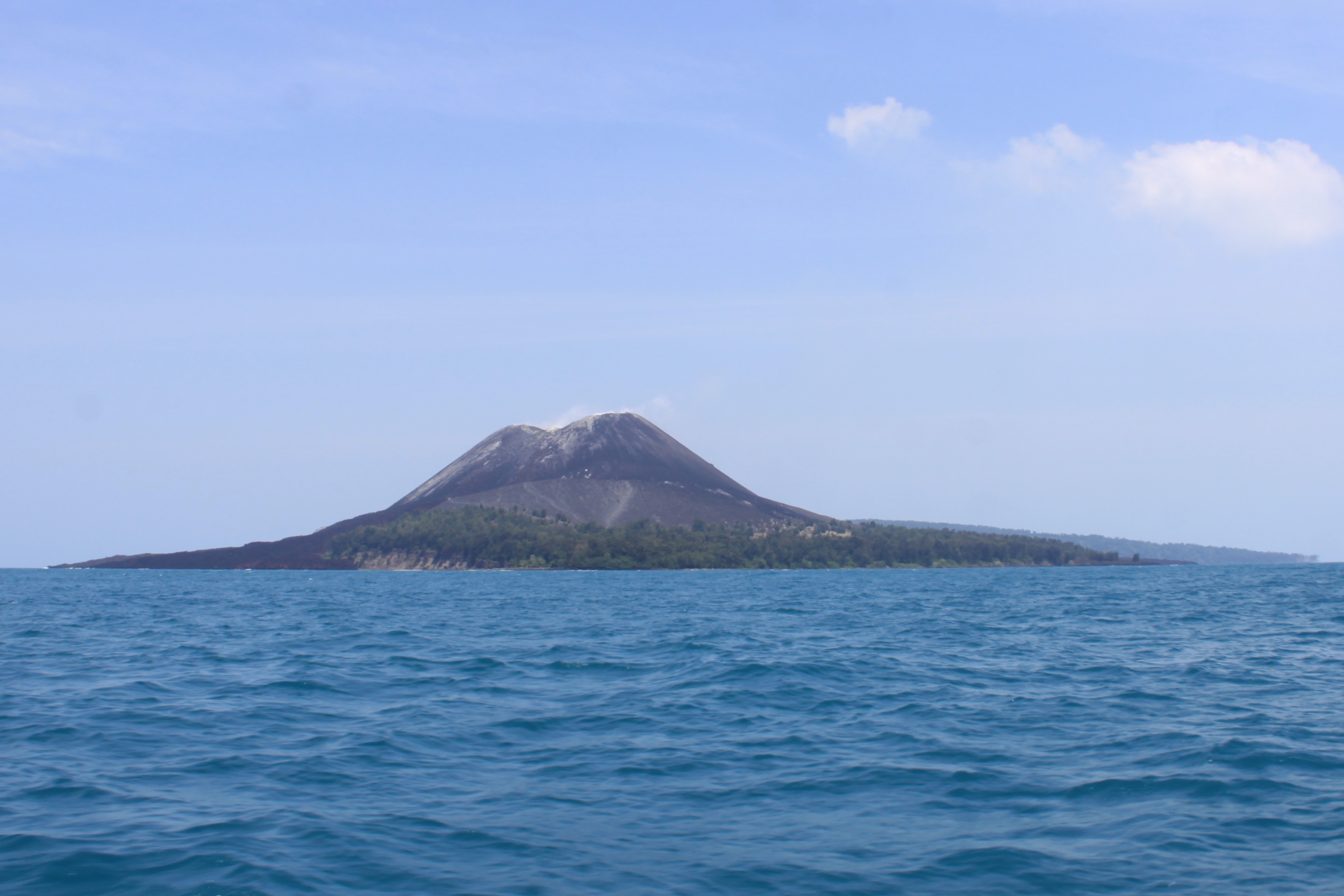
|
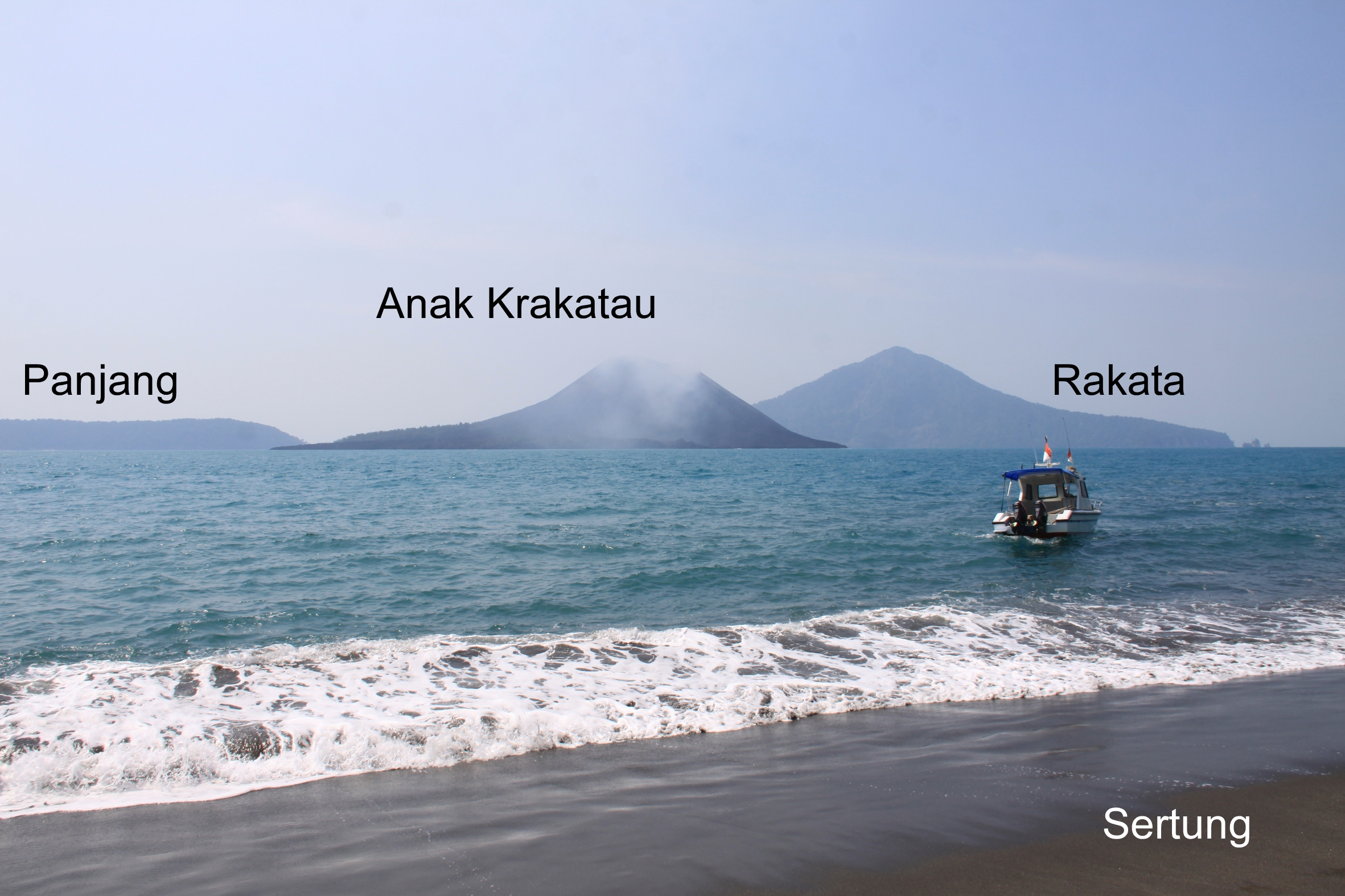
|
| Volume (km3) | |
| Case 1 | 0.16 |
| Case 2 | 0.21 |
| Case 3 | 0.26 |
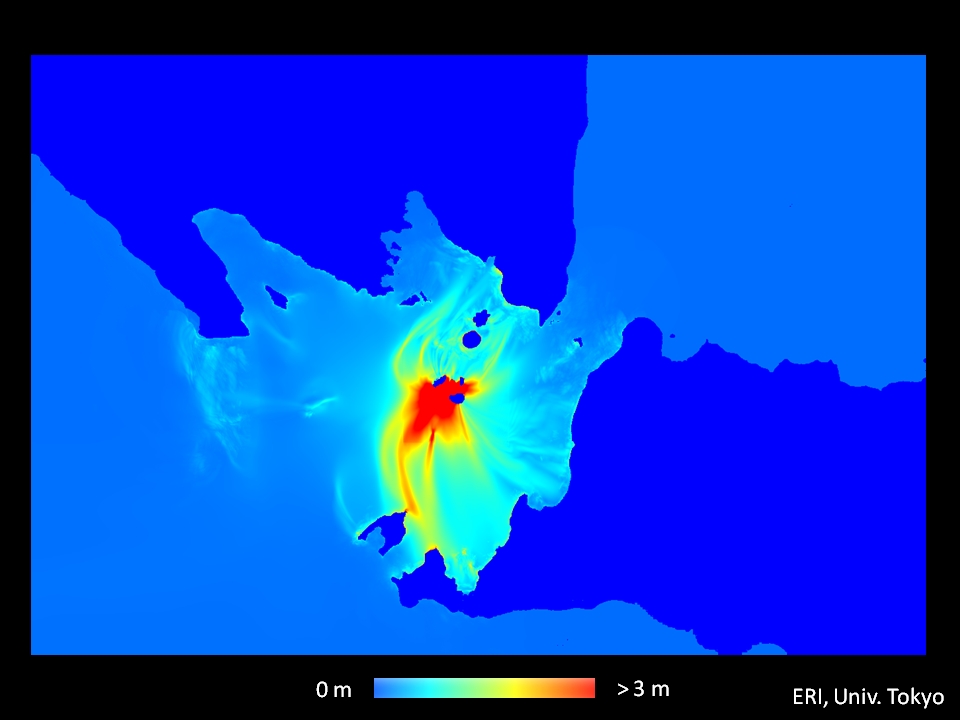 |
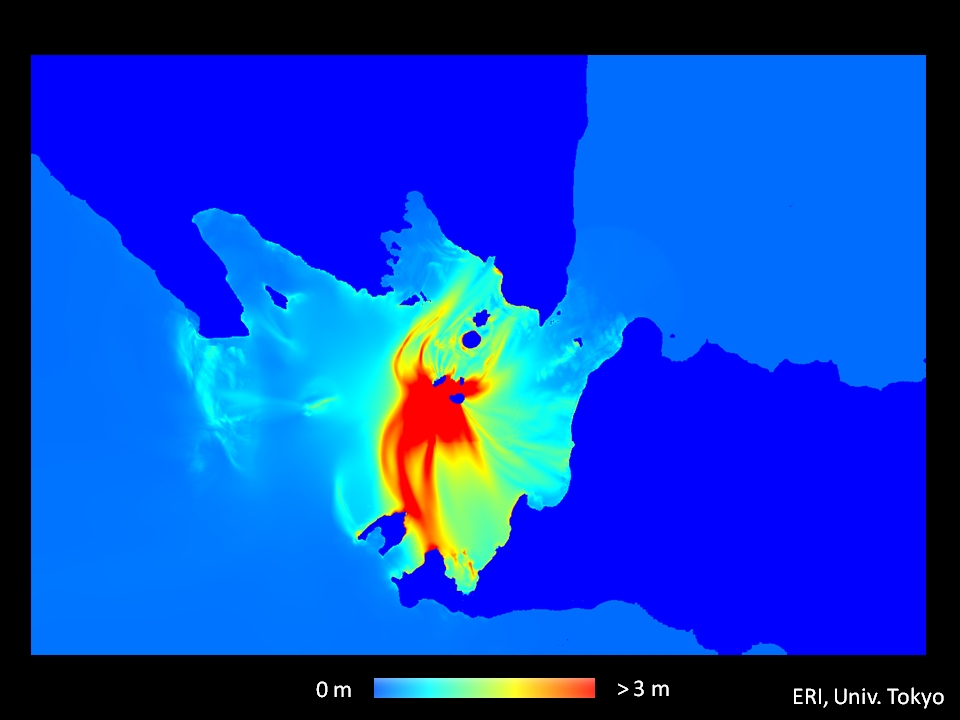 |
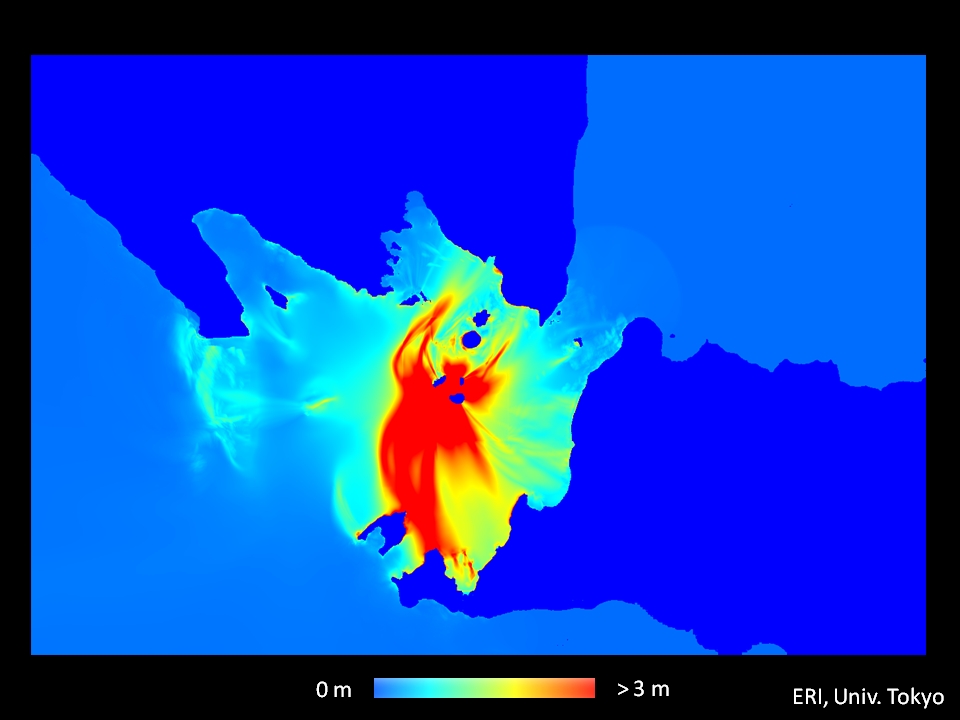 |
|
|
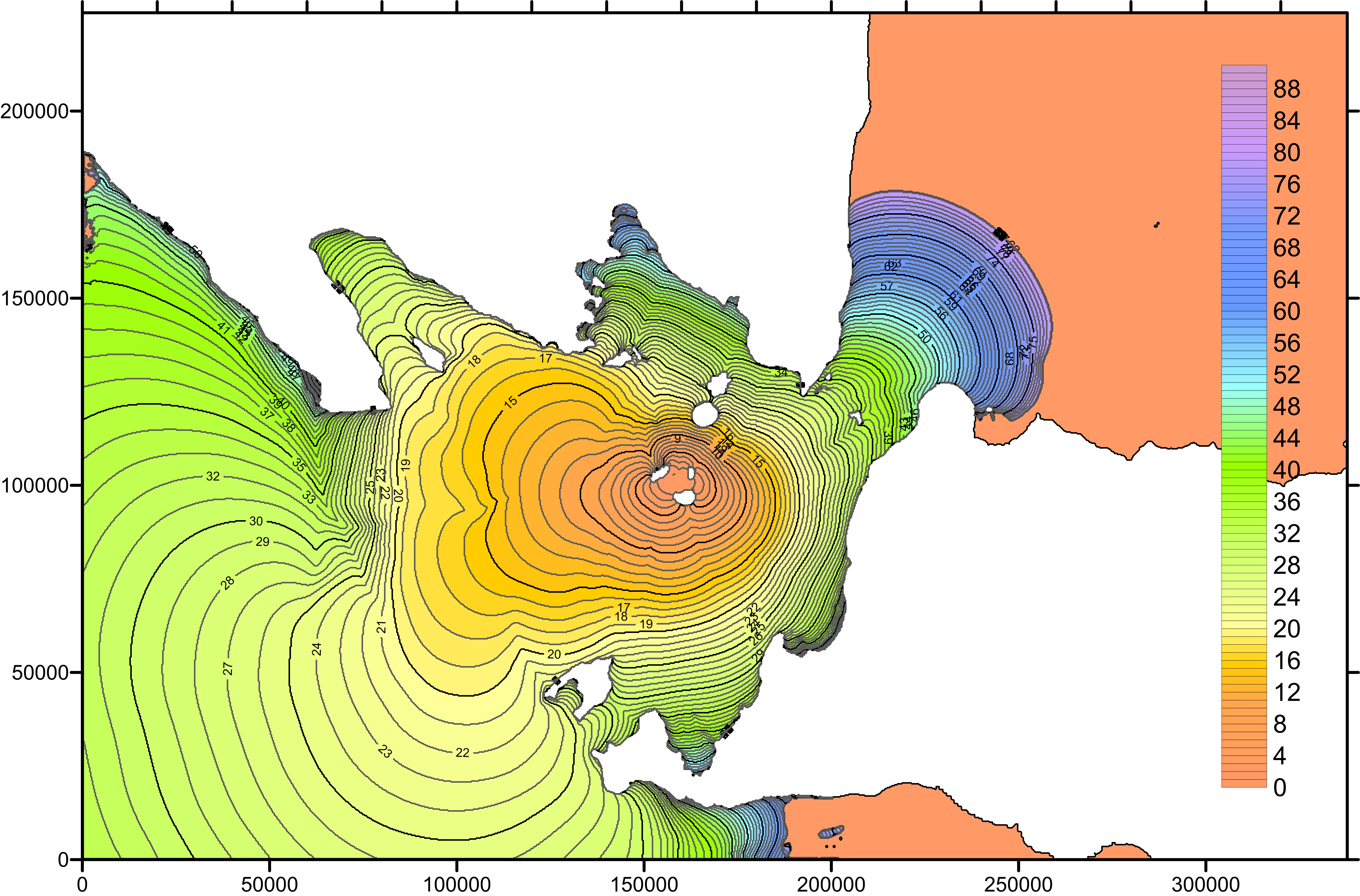 |
| Fig. 5. Distribution of tsunami arrival time. Unit is min. Tsunami arrives at Carita, where significant disaster was observed, in 38 min. |
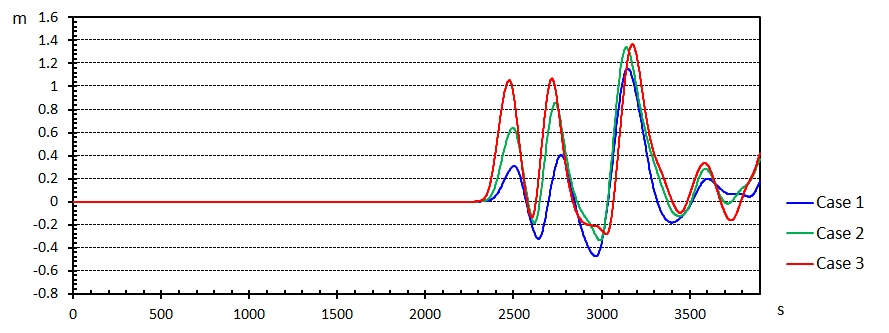
|
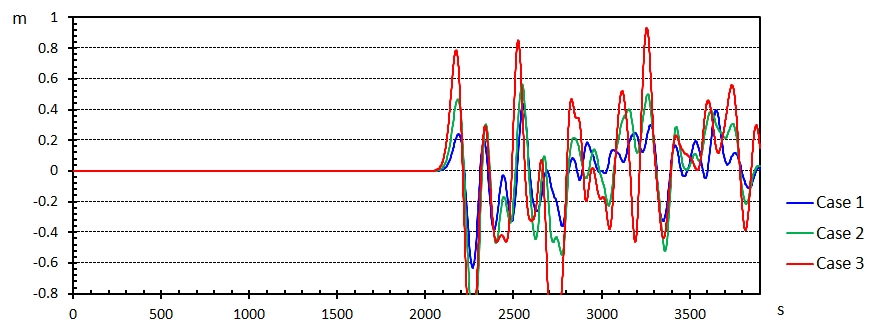
|
|
|
Fig. 6a Waveform output at Carita, west coast of Java. The first positive peak arrives at ~40 min. The waves with a maximum height >1 m arrive several times. |
Fig. 6b Waveform output at Anjer, west coast of Java. The first positive peak arrives at ~36 min. The waves less than 1 m arrive several times. |
|
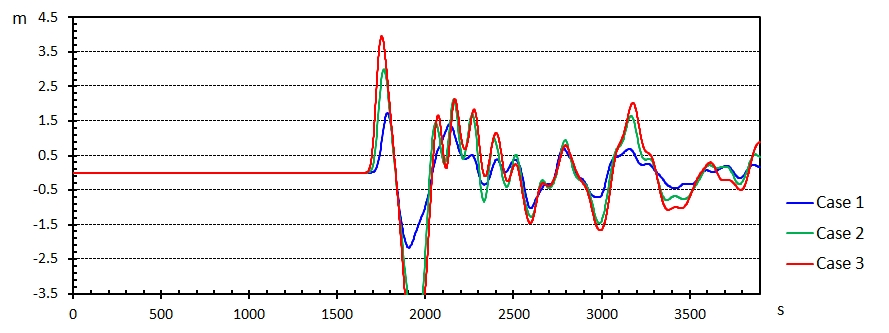
|
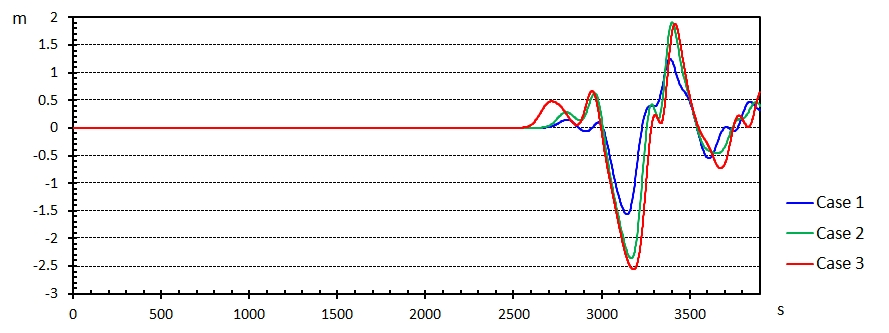
|
|
| Fig. 6c Waveform output at Prinsen Eiland, west of Java. The first positive peak arrives at ~29 min. For Case 3, the wave height becomes more than 3.5 m. | Fig. 6d Waveform output at Kalianda, east coast of Sumatra. The first positive peak is weak; however, for Cases 2 and 3, the wave height becomes more than 1.5 m. |